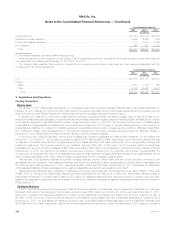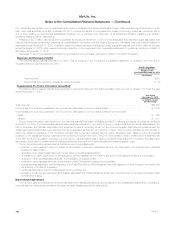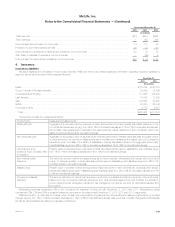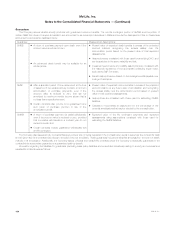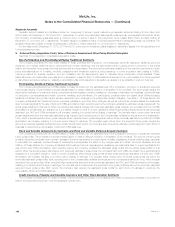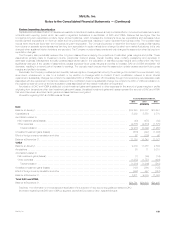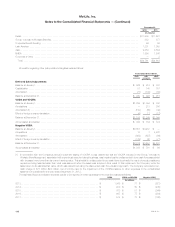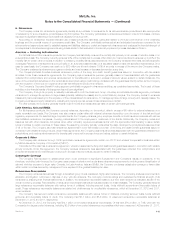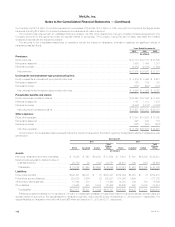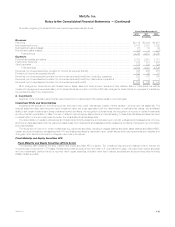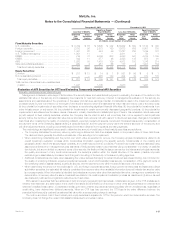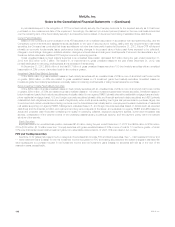MetLife 2012 Annual Report Download - page 114
Download and view the complete annual report
Please find page 114 of the 2012 MetLife annual report below. You can navigate through the pages in the report by either clicking on the pages listed below, or by using the keyword search tool below to find specific information within the annual report.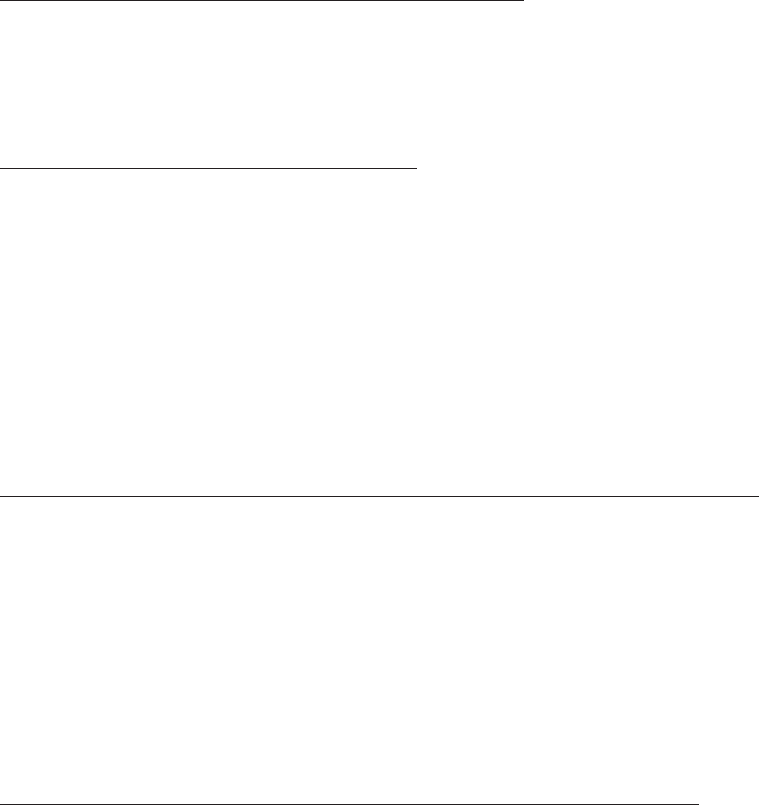
MetLife, Inc.
Notes to the Consolidated Financial Statements — (Continued)
Separate Accounts
Separate account assets and liabilities include two categories of account types: pass-through separate accounts totaling $185.9 billion and
$158.8 billion at December 31, 2012 and 2011, respectively, for which the policyholder assumes all investment risk, and separate accounts for which
the Company contractually guarantees either a minimum return or account value to the policyholder which totaled $49.5 billion and $44.2 billion at
December 31, 2012 and 2011, respectively. The latter category consisted primarily of funding agreements and participating close-out contracts. The
average interest rate credited on these contracts was 2.80% and 3.12% at December 31, 2012 and 2011, respectively.
For the years ended December 31, 2012, 2011 and 2010, there were no investment gains (losses) on transfers of assets from the general account
to the separate accounts.
5. Deferred Policy Acquisition Costs, Value of Business Acquired and Other Policy-Related Intangibles
See Note 1 for a description of capitalized acquisition costs.
Non-Participating and Non-Dividend-Paying Traditional Contracts
The Company amortizes DAC and VOBA related to these contracts (term insurance, non-participating whole life insurance, traditional group life
insurance, non-medical health insurance, and accident and health insurance) over the appropriate premium paying period in proportion to the actual
historic and expected future gross premiums that were set at contract issue. The expected premiums are based upon the premium requirement of each
policy and assumptions for mortality, morbidity, persistency and investment returns at policy issuance, or policy acquisition (as it relates to VOBA),
include provisions for adverse deviation, and are consistent with the assumptions used to calculate future policyholder benefit liabilities. These
assumptions are not revised after policy issuance or acquisition unless the DAC or VOBA balance is deemed to be unrecoverable from future expected
profits. Absent a premium deficiency, variability in amortization after policy issuance or acquisition is caused only by variability in premium volumes.
Participating, Dividend-Paying Traditional Contracts
The Company amortizes DAC and VOBA related to these contracts over the estimated lives of the contracts in proportion to actual and expected
future gross margins. The amortization includes interest based on rates in effect at inception or acquisition of the contracts. The future gross margins are
dependent principally on investment returns, policyholder dividend scales, mortality, persistency, expenses to administer the business, creditworthiness
of reinsurance counterparties and certain economic variables, such as inflation. For participating contracts within the closed block (dividend-paying
traditional contracts) future gross margins are also dependent upon changes in the policyholder dividend obligation. See Note 7. Of these factors, the
Company anticipates that investment returns, expenses, persistency and other factor changes, as well as policyholder dividend scales are reasonably
likely to impact significantly the rate of DAC and VOBA amortization. Each reporting period, the Company updates the estimated gross margins with the
actual gross margins for that period. When the actual gross margins change from previously estimated gross margins, the cumulative DAC and VOBA
amortization is re-estimated and adjusted by a cumulative charge or credit to current operations. When actual gross margins exceed those previously
estimated, the DAC and VOBA amortization will increase, resulting in a current period charge to earnings. The opposite result occurs when the actual
gross margins are below the previously estimated gross margins. Each reporting period, the Company also updates the actual amount of business in-
force, which impacts expected future gross margins. When expected future gross margins are below those previously estimated, the DAC and VOBA
amortization will increase, resulting in a current period charge to earnings. The opposite result occurs when the expected future gross margins are
above the previously estimated expected future gross margins. Each period, the Company also reviews the estimated gross margins for each block of
business to determine the recoverability of DAC and VOBA balances.
Fixed and Variable Universal Life Contracts and Fixed and Variable Deferred Annuity Contracts
The Company amortizes DAC and VOBA related to these contracts over the estimated lives of the contracts in proportion to actual and expected
future gross profits. The amortization includes interest based on rates in effect at inception or acquisition of the contracts. The amount of future gross
profits is dependent principally upon returns in excess of the amounts credited to policyholders, mortality, persistency, interest crediting rates, expenses
to administer the business, creditworthiness of reinsurance counterparties, the effect of any hedges used and certain economic variables, such as
inflation. Of these factors, the Company anticipates that investment returns, expenses and persistency are reasonably likely to impact significantly the
rate of DAC and VOBA amortization. Each reporting period, the Company updates the estimated gross profits with the actual gross profits for that
period. When the actual gross profits change from previously estimated gross profits, the cumulative DAC and VOBA amortization is re-estimated and
adjusted by a cumulative charge or credit to current operations. When actual gross profits exceed those previously estimated, the DAC and VOBA
amortization will increase, resulting in a current period charge to earnings. The opposite result occurs when the actual gross profits are below the
previously estimated gross profits. Each reporting period, the Company also updates the actual amount of business remaining in-force, which impacts
expected future gross profits. When expected future gross profits are below those previously estimated, the DAC and VOBA amortization will increase,
resulting in a current period charge to earnings. The opposite result occurs when the expected future gross profits are above the previously estimated
expected future gross profits. Each period, the Company also reviews the estimated gross profits for each block of business to determine the
recoverability of DAC and VOBA balances.
Credit Insurance, Property and Casualty Insurance and Other Short-Duration Contracts
The Company amortizes DAC for these contracts, which is primarily composed of commissions and certain underwriting expenses, in proportion to
historic and future earned premium over the applicable contract term.
108 MetLife, Inc.




